Dmitry Pargamanik and Will McBride, the cofounders of Market Chameleon, join IBKR’s Jeff Praissman to discuss how to identify, analyze, and interpret stock volume bursts.
Summary – IBKR Podcasts Ep. 174
The following is a summary of a live audio recording and may contain errors in spelling or grammar. Although IBKR has edited for clarity no material changes have been made.
Jeff Praissman
Hi, everyone. My name is Jeff Praissman. I’m with Interactive Brokers Podcast. It’s my pleasure to welcome back to the studio Will McBride and Dmitry Pargamanik from Market Chameleon. Hey guys, how are you?
Dmitry Paragamanik
Good. Thanks for having us, Jeff.
Will Mcbride
Great, Jeff, thanks again for having us.
Jeff Praissman
Oh, my pleasure. It’s always great to have you guys in the studio and you guys just finished up a great webinar on Stock Market Burst. How’s everything going so far?
Dmitry Paragamanik
Good. Thank you.
Jeff Praissman
So, I just want to dive into it then, how do we know it’s a stock volume burst? In other words, like what defines it as a burst just versus regular volume?
Dmitry Paragamanik
So, when we look at the volume on an exchange, usually people look at it as an aggregate and they’ll say, if you’re looking for an unusual option, you’ll say, well, what was the cumulative volume throughout the day?
And you would compare that volume to historical averages. And if it’s way above the average, we would start saying, well, now it’s unusual.
If we look at it at a more granular level, there could be a lot of things going on that you may not even realize is unusual because you’d have to look inside the details. And it’s more of what traded during what periods of the day and how it traded. So, when we look for a stock volume burst, we look more on a granular level of a large liquidity event that happened in a very short period of time.
And that’s what we’re looking for. And we’ve categorized that into a separate bucket for analysis. So, what we’re really looking for are these big institutional size trades that may be happening throughout the day. We separate those out and analyze them taking away the typical trading volume, the retail trading volume.
And, by separating those out, we could get different insights.
Jeff Praissman
So, the stock volume bursts get put in a bucket, but within that bucket, how do you characterize the data? Once you know, okay, you’ve defined it as a burst, and then what’s sort of the next filtering process?
Dmitry Paragamanik
Yeah. So, first define it as a volume burst. What we’ll do is analyze the volume profile of that individual security. Because what is a volume burst in Apple might be much different than a volume burst in a much smaller stock. So, we’ll look at the typical trading that goes on in a stock.
And we’ll also divide that into different times of day, because a stock will also from day to day see different volume based on what time of day we’re looking at.
So, if we’re looking at the very early morning, what you’ll see is an accumulation of orders. And in the morning, you’ll see much larger volume trading than you would during the middle of the day. And then you see it pick up at towards the end of the day. So, we’ll even section it off by time of day and look at the volume in very short periods.
So, let’s take it in within a minute. We could look at it even within milliseconds. And then we’re looking for these unusual, large trades that happen in a very short period and we’ll categorize those, but we’ll also look at how many retail trades happen, how many very small trades.
Maybe more professional sized trades or pro trades, but not quite the large institutional trades. So, they have a couple.
The way we section it off is we have certain thresholds and then we also have certain metrics, though, that apply to that specific stock, right? And then that’s how we categorize it.
And we’ll put it, for us at least, there’s a limited amount of buckets you want to take a look at. So, we look at it, four different ones, like the small trader, retail size trader with the pro and then the institutional size.
Jeff Praissman
And besides the size, what else? Does it matter what exchange it occurred on? Or is any of that other stuff where, how granular do you get, I guess, when you’re really analyzing this stuff?
Dmitry Paragamanik
Yeah, exactly. Then what we’ll do is also tag where that liquidity event happened. So, it could happen on the exchange level, on the lead exchange level. It could also happen in the dark pool. So, then what we do is tag where did this liquidity then happen? If it happened in a dark pool, you don’t know really which dark pool it traded on.
If it traded on exchange, that’s a little bit clearer. What happens, we’ll check, we’ll tag which exchange or exchanges that this liquidity event occurred.
Jeff Praissman
Got it. And does it matter if the trade occurred during an uptick or a downtick?
Dmitry Paragamanik
Yeah. So, once we identify that there was this big liquidity event or volume burst. Well, the next thing we try to determine is, well, did it happen on an uptick or downtick? So, we would have to compare it to the.. what we do is we capture the VWAPs that these trades are trading at, and we compare it to the previous VWAP.
So, on an uptick, it suggests that there was a taker of liquidity. Somebody had to step up and take liquidity on the order book, or perhaps even take liquidity on the dark pool.
If we look at it and it occurred on a downtick or a significant downtick, then that could have been somebody hitting liquidity. Hitting the order book. Hitting those limit orders.
So that’s the next thing we do is first we identify the big, large volume bursts and then we tag it, was it on an uptick, suggesting a large buyer taking liquidity? Or on a downtick, suggesting somebody hit liquidity on the downtick.
Jeff Praissman
And so, it sounds like whether the buyer’s taking liquidity can really have an effect on the underlying price. And then so let’s fast forward a little bit, like you narrow it down, say that it was an uptick, the buyer took liquidity, what then are you looking at?
What’s the next kind of, in your analysis, what’s the next step? You’ve identified this burst. You can estimate that they took the liquidity. It’s an uptick. Where’s the next kind of step for you guys?
Dmitry Paragamanik
Right. So, then we look for other clues and explanations. And once we see it, we know the time it happened, we know the size of it, exchanges, then we want to analyze and say, can we explain this volume burst? Was it a program trade? Was it a reaction to something? So, the next analysis you would want to see, was it perhaps a hedge on a big options trade?
So that’s a possibility too. And you’d want to correlate, did any large trade happen on one of the options exchanges during that period that could explain a way that there was a trade on the options and then somebody needed to go and trade and hedge that Delta. So, we would try to connect that to explain it away.
Did any news event happen at that time that kicked in perhaps a program trade or somebody reacting to the news, and then we could explain away why did this big volume burst happen?
It could be something that a Fed Speaker said or some kind of news event. So, we would tag that and then it will explain away why that occurred.
Another example could be it could be part of a larger, basket program trade. Sometimes what you’ll see is a big basket of stocks or related stocks happen all at the same time. If that happens, we will tag that as well.
And if we can’t explain it away, let’s say it just happened and nothing else really explains why. There’s no news out there. We don’t see any kind of volume bursts going on anywhere else around that time in the market. There are no big options trades that would suggest that. So then if that occurs, we then set it aside and say, okay, let’s see what else happens afterwards.
Are there repetitive liquidity takers there? And what happens after this liquidity is taken? Because one of the clues you want to look at is before stock moves to a higher level, you would have to take that inventory off the books, right? Take the rest of the orders, take that liquidity away for it to move higher, right?
Or to move lower, you’re going to hit that liquidity. So, then that becomes a different story. The pattern of the trading post-trade.
Jeff Praissman
So, I’m glad. I want to recap a few things you said, because I think you covered a lot of important points just there. First of all, with having you guys on, we always love to talk about options. So, I’m glad that we were able to mention how important this could be to also see if it is tied to some sort of option trade, but then also recap when you mentioned programmatic trading.
Just for our listeners. Just so they understand what you’re really talking about is some might be going out getting a basket of stocks. And what that means is that they’re going to go and they might be buying a bunch of Apple, a bunch of Tesla, a bunch of Alphabet, a bunch of Meta, a bunch of Exxon Mobil and a whole slew of trades.
And we’ve done, I’d say 30 webinars and podcasts, maybe more. One key point that I think that’s a really important point that always comes up, especially when we’re talking about analysis is that it’s not a vacuum. Like it’s not just looking at the stock burst and saying, okay, It’s just about the stock.
It could be just about the stock, but many times you have to look at not just one thing but pull in other data points to make sense of it, right?
So that’s really summarizing what you just went over. This is one more tool in the belt to help an educated investor make decisions.
Dmitry Paragamanik
Exactly.
Jeff Praissman
And taking another step back, you mentioned this earlier, but the noise trades. It seems like there’s a way to filter them out.
Dmitry Paragamanik
Right, right. So that’s why we categorize and tag these trades because if we isolate certain trades that we want to analyze, then if we could isolate them and remove everything else, that kind of removes the other noisy trades that could be going on in there.
And then you really just have, for example, you could be looking at, narrow it down from, you have a million different trades throughout the day, but there might be five to ten trades, maybe two or three trades that you really want to take a look at, and see, well, what happened there?
Like these are unusual and how did it trade? And what happened afterwards?
So that’s the idea there that we could really narrow down and take away, remove all the other data points just to focus on something very specific that we’re looking for.
Jeff Praissman
Something you mentioned a little bit earlier, though, about the first trades that it could be just explainable. Could you give a little bit more detail about what some of the circumstances are where you could look at it and say, oh yeah, that’s exactly why this happened?
And there’s really not much more to look into. I guess, kind of circumstances that pull out these burst trades and they’re just, yeah, this is why.
Dmitry Paragamanik
Yeah. Well, so some of the examples we talked about is if we could identify large options trade. And it looks like, okay, we could figure out the Delta of that trade. And this looks like it’s a Delta hedge.
Obviously like news, Fed announcements. So, once we could explain it away, we say, okay, this is what happened. We could explain it. And that will get put other analysis, right? Because then we could find similar situations. For example, here’s a situation where it was reacting to a large call options trade, alright?
And this is what happened, Big Hedge, and that will get put into a bucket for further analysis because we can look for similar situations.
Sometimes you’ll have a company event. There’ll be an event and the company will hold an investor meeting, maybe a conference, and they could be talking at that conference. Investors are listening. All of a sudden you see somebody coming in and taking a lot of liquidity very quickly.
So, those are the things that we want to look for because we want to tag them appropriately to say, all right, this is a big liquidity event. This is the correlating or related reason that can explain this liquidity event.
And that’s how you want to capture it. Because that’s how you want to analyze it going forward or backwards.
But that’s the way that we take the surrounding circumstances. Of course, you’re going to have a lot of liquidity, right? Even events prior to earnings. So, it’s not uncommon to see a larger amount of trades that are institutional sized trades. As you get closer to earnings and even as you exit the earnings.
So that wouldn’t be unusual. We could explain away. We understand why it’s happening, right? There’s nothing too unusual about that.
Jeff Praissman
Yeah. And I would think too, like maybe like quarterly rebalances of funds and ETFs. And you’re going to just see that those large programmatic trades where you’re going to see hundreds of not thousands of large trades and several stocks that you’re going to see that go through sort of end of the day, December 31st or something.
Okay. I know what that is, right?
Dmitry Paragamanik
If you know what it is, it’s not signaling anything or indicating something different. So, it’s very important, I think, to take that next step in your analysis. And make sure that you are correlating those events with the volume spike.
Jeff Praissman
What about when it’s more than just one company stock trading at the same time? You’re seeing a bunch of bursts. Well, what can you read into that? Is there a situation where you might see a bunch of pharmaceutical companies trade and all of a sudden that’s going to lead you somewhere, a bunch of oil companies trade?
Dmitry Paragamanik
Yeah, that could be a different indicator if you’re seeing all a sudden a spike or these volume bursts closely correlated in a certain sector. It could be the energy sector, it could be the technology sector, could be whatever sector. You would probably then take that into account and say, well, okay, it’s not just specific to the stock.
It could be something specific to the sector or something going on with that sector because sometimes you also get a news cycle that’s specific to a sector, right? To the energy or sometimes to technology or they’ll hold congressional meetings on laws and regulation.
Or they come out with economic numbers.
So yeah, you want to pay attention to volume bursts happening in the market that are very close together, right? And see, does it make sense that these are related? Sometimes, yes, sometimes it may not be. It might happen by chance, but you’ll get clues if you see energy companies, all of a sudden, five, six of them with big volume bursts very close together. And you might see a repeat throughout the day.
Well, that could be indicating that there’s something going on in that specific sector.
Jeff Praissman
And do you look at the frequency of these bursts to see if there’s some sort of historical pattern? Like how far back do you look or don’t you at all? And you just look on a day-by-day basis?
Dmitry Paragamanik
So, one of the things we look at is how many of these bursts are happening inside the day. And then we look at the history. So, inside the day, you could be looking for something like, well, I see a big volume burst. It looks like it was on an uptick. Let’s say the stock’s floating up, and then all of a sudden, you see another volume burst on an uptick.
And then a half hour later, another one, and then another one, but you don’t see any down downtick volume burst.
Well, that could indicate somebody’s really looking for liquidity and stepping up once they detect it. Are they detecting it on the lit exchange and grabbing it? Or is it happening somewhere in a dark pool where it’s getting batched up? So, it’s a little bit different because if it’s on a lit exchange that they’re grabbing, they’re looking for it.
They don’t care where they’ll find it. They just want to, if they see a large size offer a lot of stock that they need, they’ll grab it right away because they don’t want to risk somebody else taking it, right?
So, if it’s happening on the exchange, that means as soon as the market gets to it and they see it, the program will just take it, right?
In the dark pool, it’s a little bit different because it’s kind of sitting there waiting for the other side to show up and it could just match up because you’ve reached the point where you have these two different trades. Large trades match up in the dark pool’s engine.
So that’s where we’re looking. Where are they taking it? What’s happening afterwards and how frequently is it going on? If it happens one time, like sometimes you’ll see a very large volume burst in the morning and it’ll be maybe on an uptick. And then all of a sudden, the stock just drifts lower all day and there are no more volume bursts.
And that could suggest something completely different. Maybe somebody in the morning had to cover a position or somebody got liquidated on a short or they just got completely cleaned up.
We call it cleaned up when that’s it. You bought everything you need, and you’re done.
You don’t have anything else behind you. And then if you were driving up the stock price with that liquidity and you’re done, the market could just move back down if there are no more bidders there. So, that’s why if there’s some strength behind that, let’s say liquidity buyer, usually what you’ll see is that the stock keeps floating up after let’s call it a by volume spike on an uptick.
And you’ll see some repeats because as they see more liquidity, they’re going to take it.
Jeff Praissman
Yeah, I could see this the stock movement itself maybe driving some of the bursts versus the burst driving the stock movement. Stock just spikes up or down and has a big move and, all of a sudden, people are trying to cover some sort of position or they may move before the burst and then all of a sudden the burst occurs.
Because someone’s got to either cover short position or they have some sort of related option position that they’re hedging against, or either locking in a profit or trying to salvage a loss or whatever against it.
Dmitry Paragamanik
Yeah, exactly. Is it just like a one-time thing or do you see a repeating? And also, we could just compare it. Well, are there not only big volume spikes, but is it more than usual, right? Is there something else that we’re seeing that is beyond the usual?
And so, we’ll look for not unusual volume, but unusual volume bursts.
Jeff Praissman
This has been great. Any final thoughts you want to leave the listeners with?
Dmitry Paragamanik
Yeah, I think that when you’re analyzing the volume, a lot of people like to look at unusual volume. You probably want to get a little bit deeper into it and look at it at a more granular level, because that could tell you a completely different story. And you want to try to explain away that volume. Even if it’s unusual, what potentially could be making it unusual?
I think that’s another important factor in your analysis. And even if you’re trading options and before you trade those options, the options are a derivative.
So what happens in the stock will matter what will happen in the options, right? One of the things is you might start seeing signs of potential volatility even prior to the options moving, right?
And those signals, those indicators could be how the stock is trading itself.
Jeff Praissman
Well, Will and Dmitry, thank you guys for coming by.
For our listeners, you can find this podcast and all the other great podcasts we’ve done with Market Chameleon and our other contributors on our website. Just go to Education, click on IBKR Campus and click Podcasts.
You can also search by contributors. You can just look for everything that our Market Chameleon has done between the webinars and the podcasts.
Also, we’re available on the usual Spotify, Apple Music, Google Play, Amazon Play, and so forth.
Guys, thank you so much. It’s been a great day having you come in for the webinar and now the podcast.
And can’t wait till next month when we do our next session.
Will Mcbride
Awesome job, Jeff and Dmitry, thank you.
Disclosure: Interactive Brokers
The analysis in this material is provided for information only and is not and should not be construed as an offer to sell or the solicitation of an offer to buy any security. To the extent that this material discusses general market activity, industry or sector trends or other broad-based economic or political conditions, it should not be construed as research or investment advice. To the extent that it includes references to specific securities, commodities, currencies, or other instruments, those references do not constitute a recommendation by IBKR to buy, sell or hold such investments. This material does not and is not intended to take into account the particular financial conditions, investment objectives or requirements of individual customers. Before acting on this material, you should consider whether it is suitable for your particular circumstances and, as necessary, seek professional advice.
The views and opinions expressed herein are those of the author and do not necessarily reflect the views of Interactive Brokers, its affiliates, or its employees.
Disclosure: Market Chameleon
The information provided on MarketChameleon is for educational and informational purposes only. It should not be considered as financial or investment advice. Trading and investing in financial markets involve risks, and individuals should carefully consider their own financial situation and consult with a professional advisor before making any investment decisions. MarketChameleon does not guarantee the accuracy, completeness, or reliability of the information provided, and users acknowledge that any reliance on such information is at their own risk. MarketChameleon is not responsible for any losses or damages resulting from the use of the platform or the information provided therein. The 7-day free trial is offered for evaluation purposes only, and users are under no obligation to continue using the service after the trial period.
Disclosure: Margin Trading
Trading on margin is only for experienced investors with high risk tolerance. You may lose more than your initial investment. For additional information regarding margin loan rates, see ibkr.com/interest
Disclosure: Options Trading
Options involve risk and are not suitable for all investors. For information on the uses and risks of options, you can obtain a copy of the Options Clearing Corporation risk disclosure document titled Characteristics and Risks of Standardized Options by going to the following link ibkr.com/occ. Multiple leg strategies, including spreads, will incur multiple transaction costs.
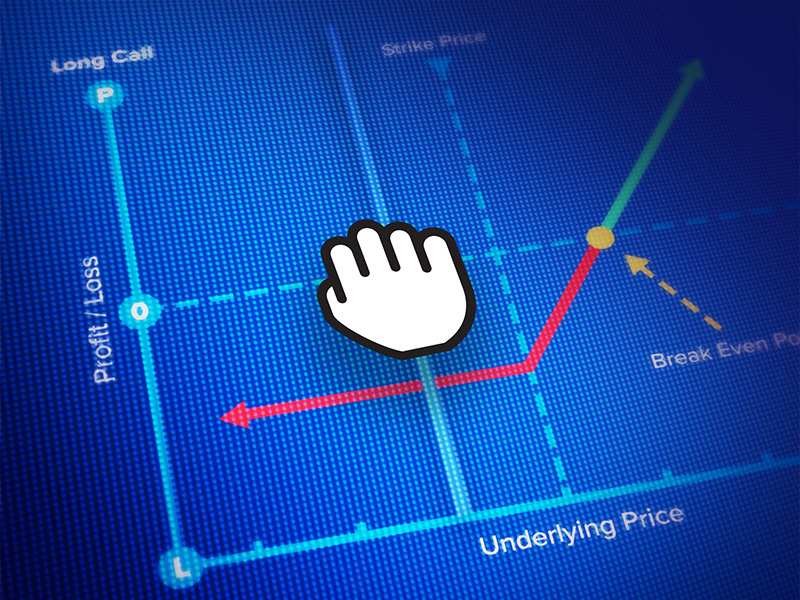


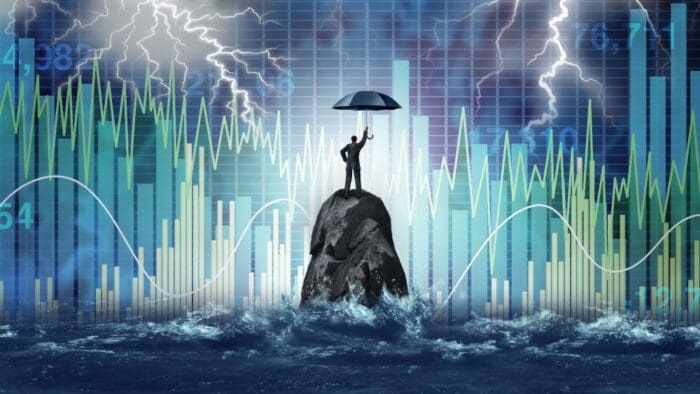



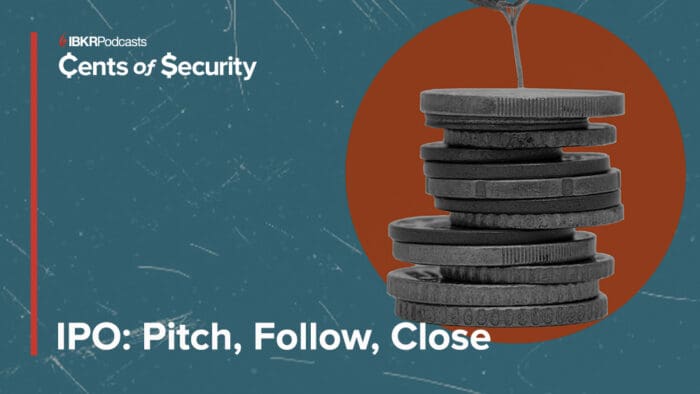
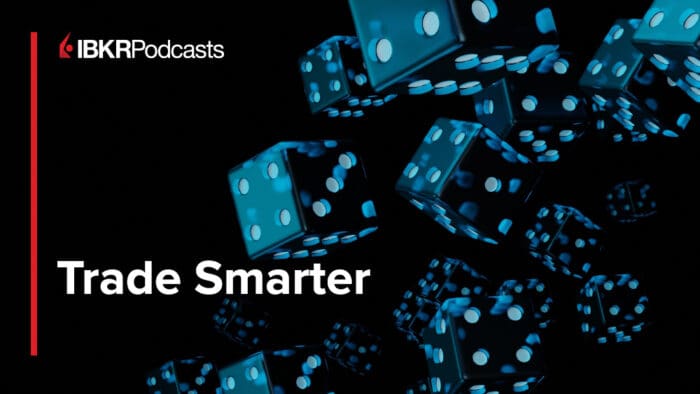
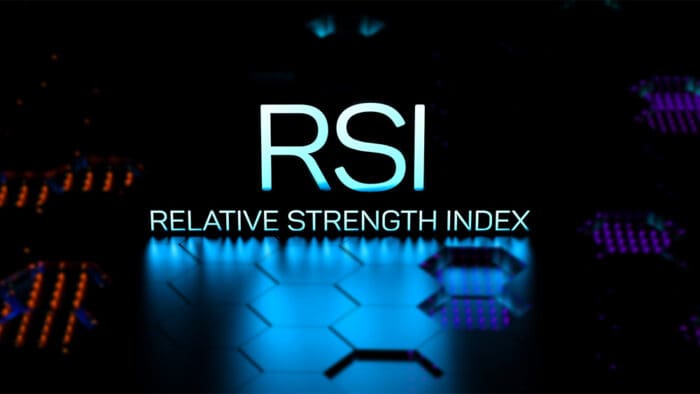

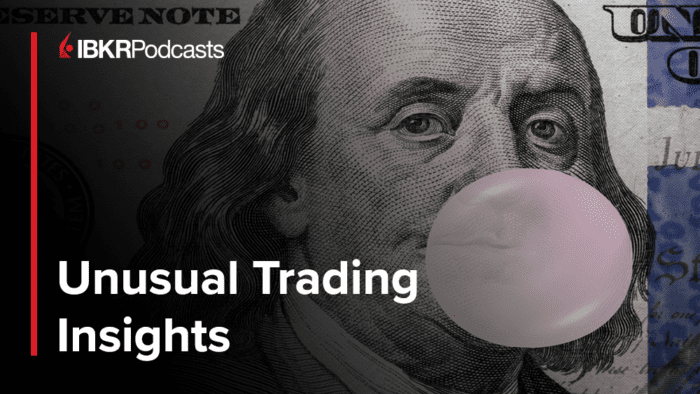



Join The Conversation
For specific platform feedback and suggestions, please submit it directly to our team using these instructions.
If you have an account-specific question or concern, please reach out to Client Services.
We encourage you to look through our FAQs before posting. Your question may already be covered!